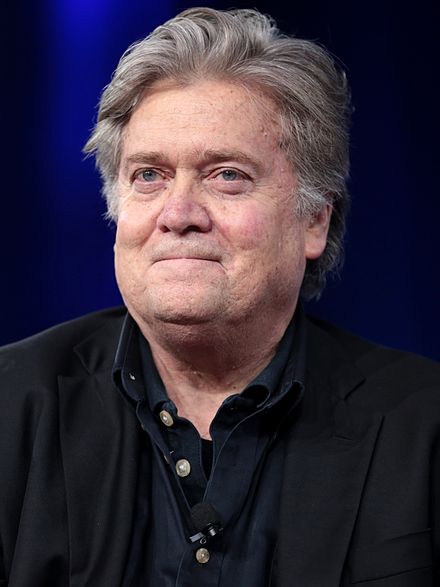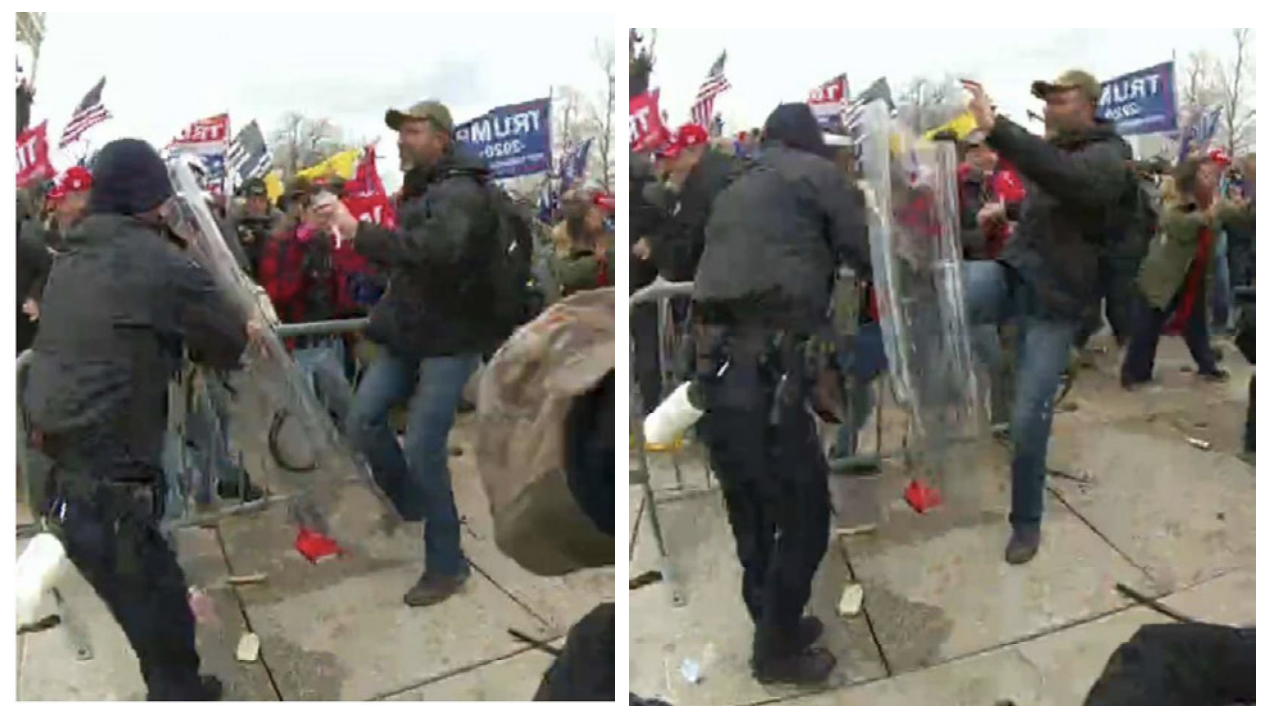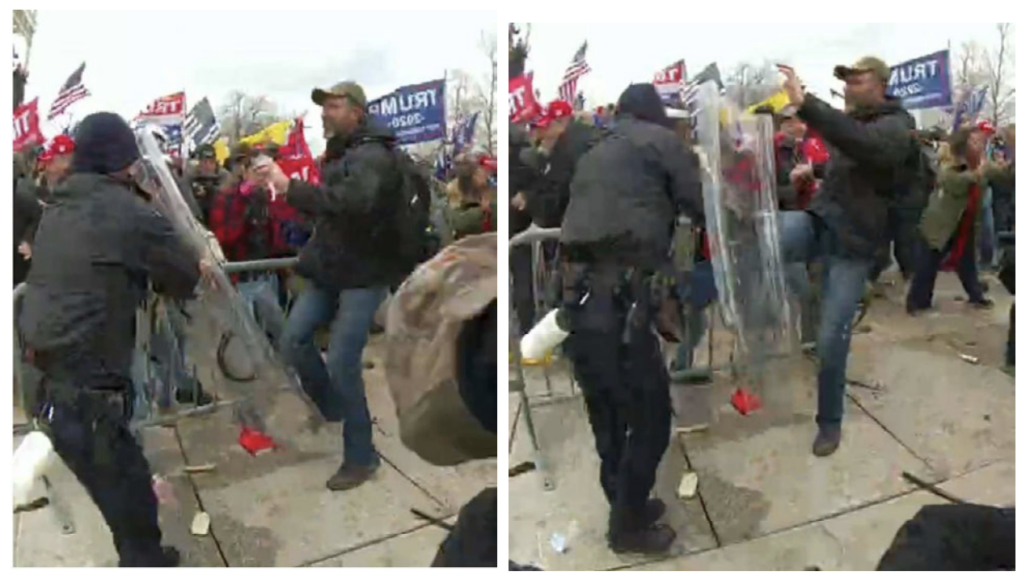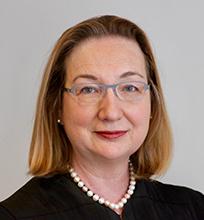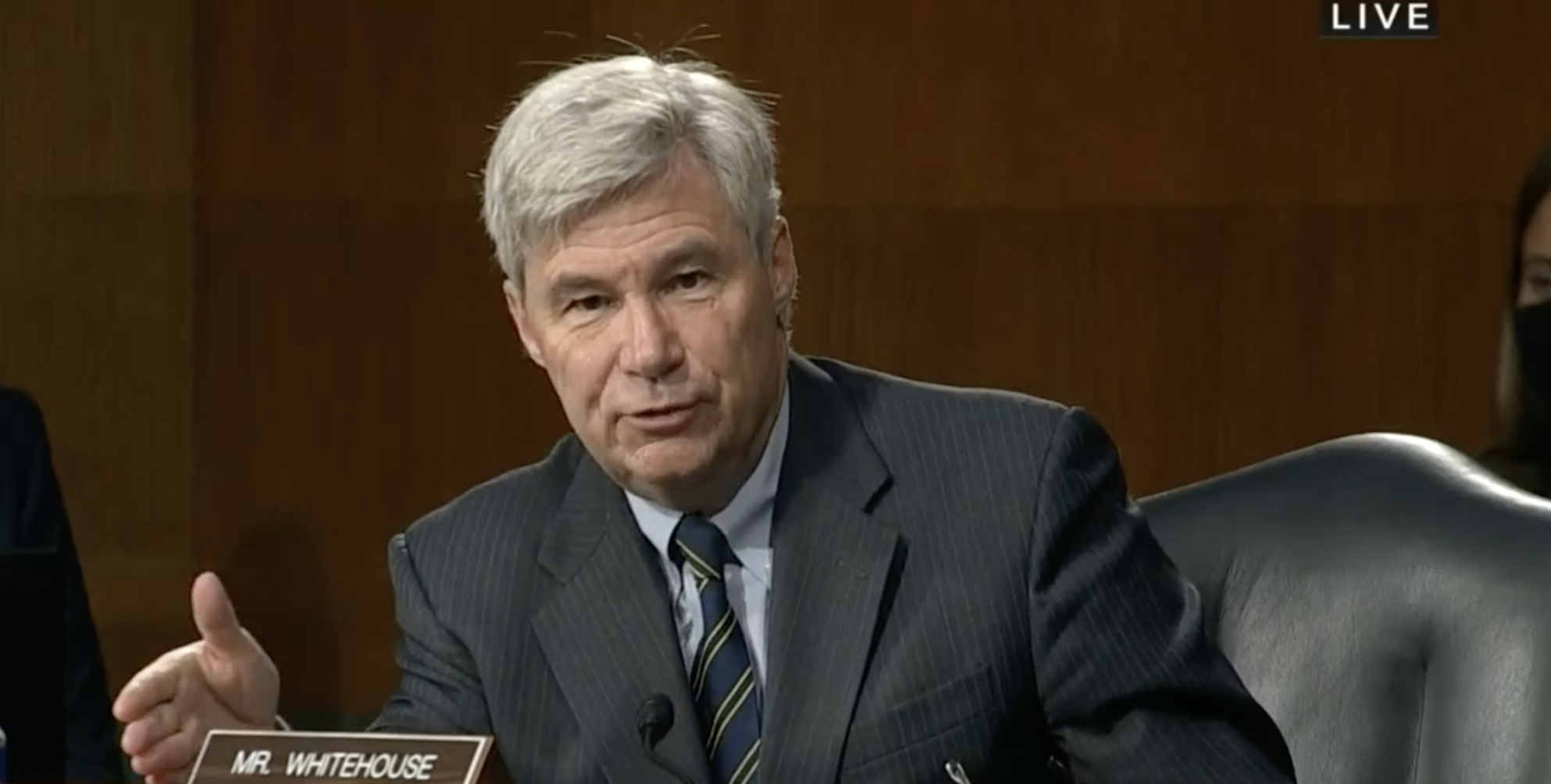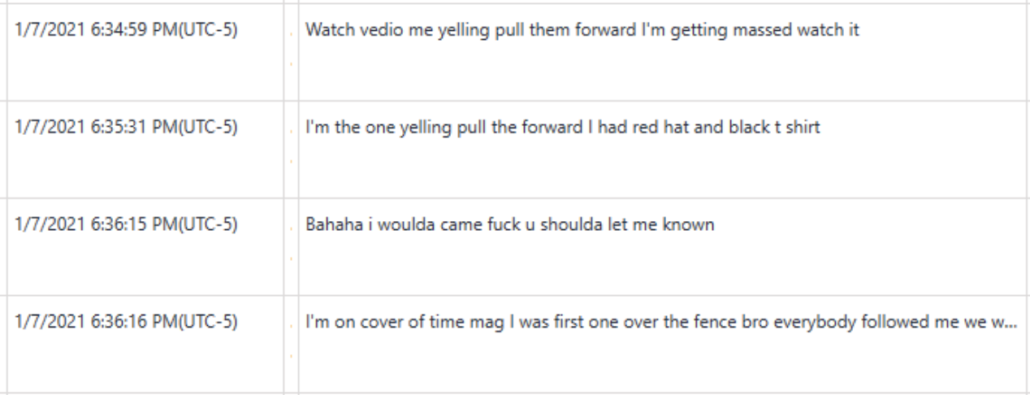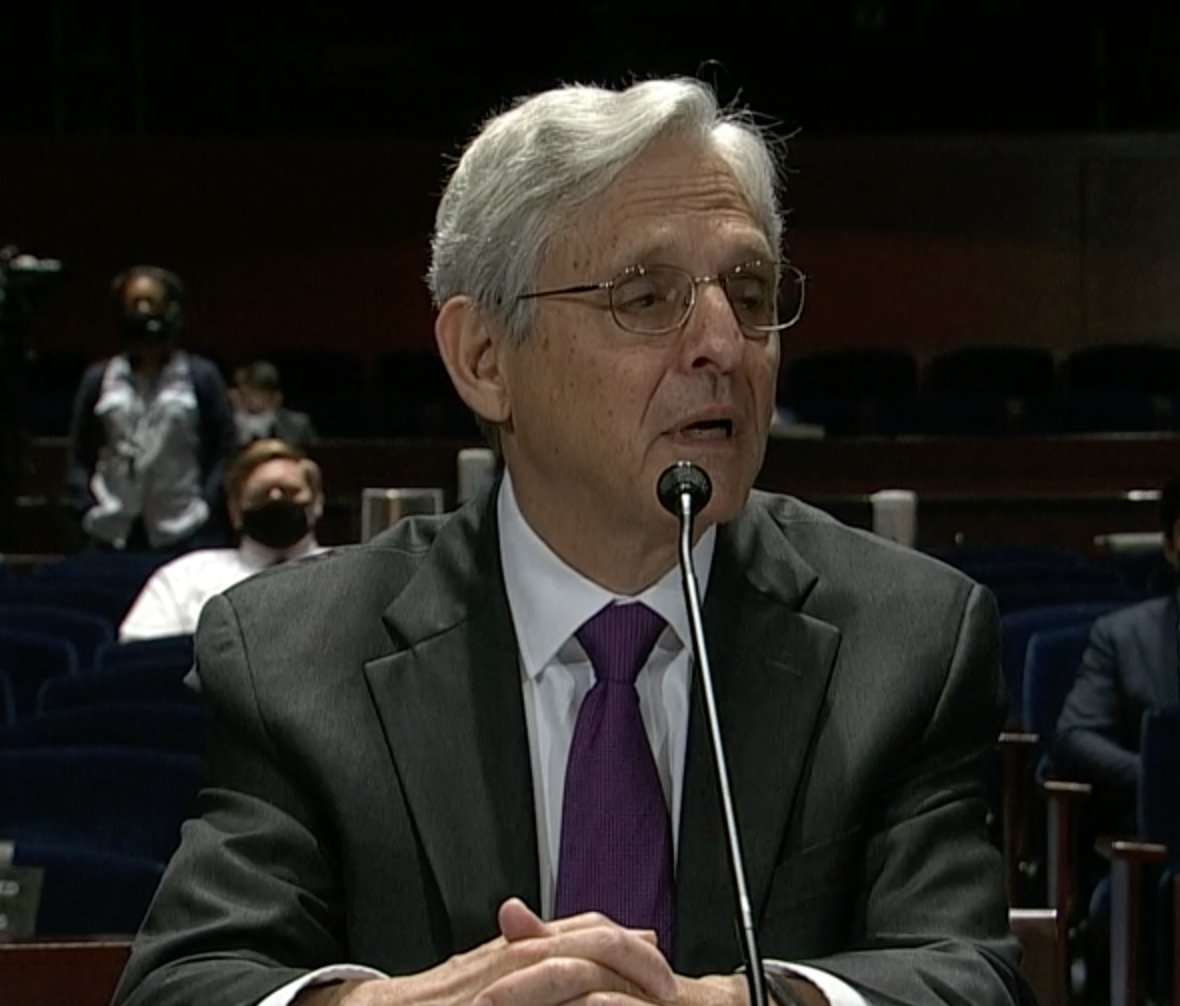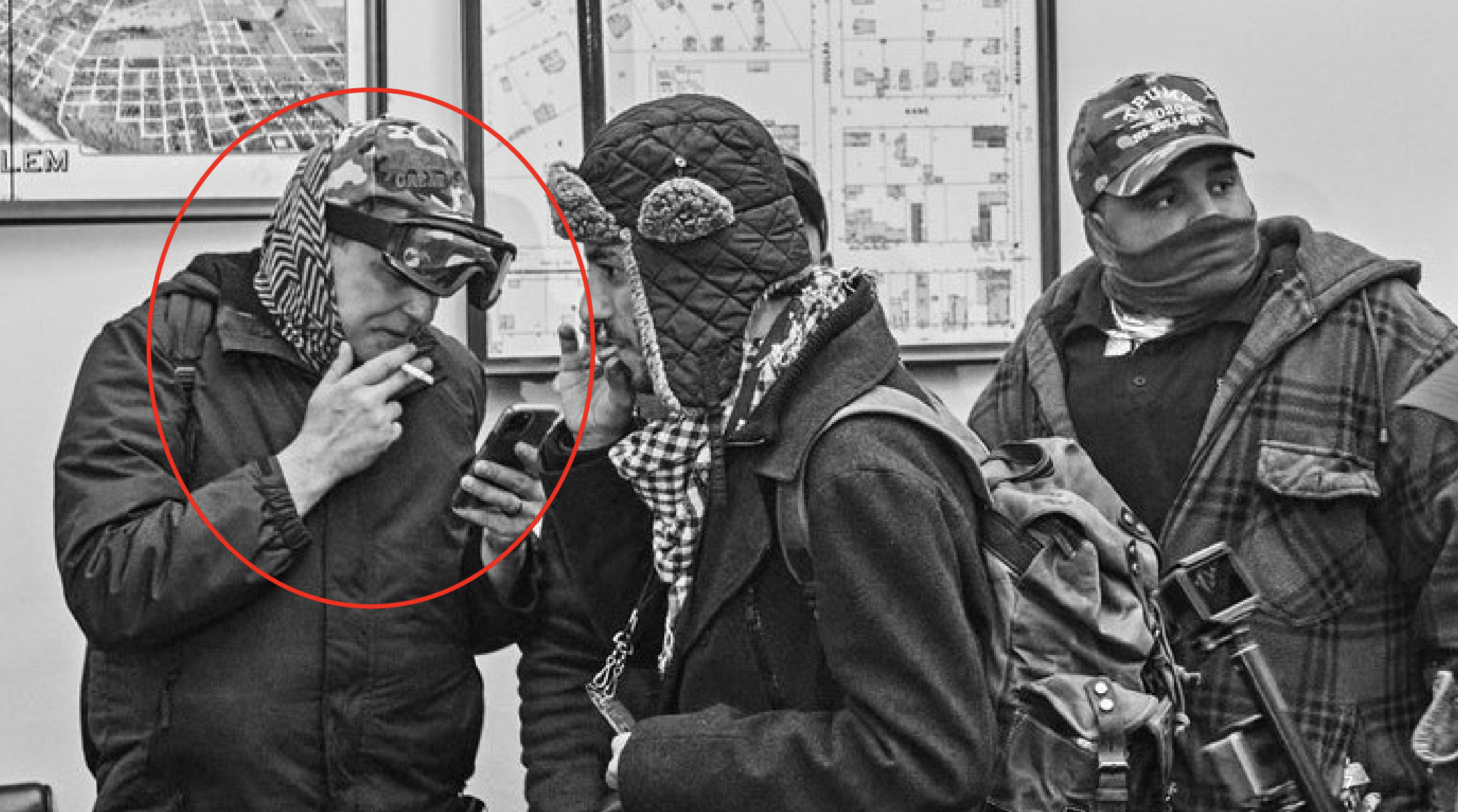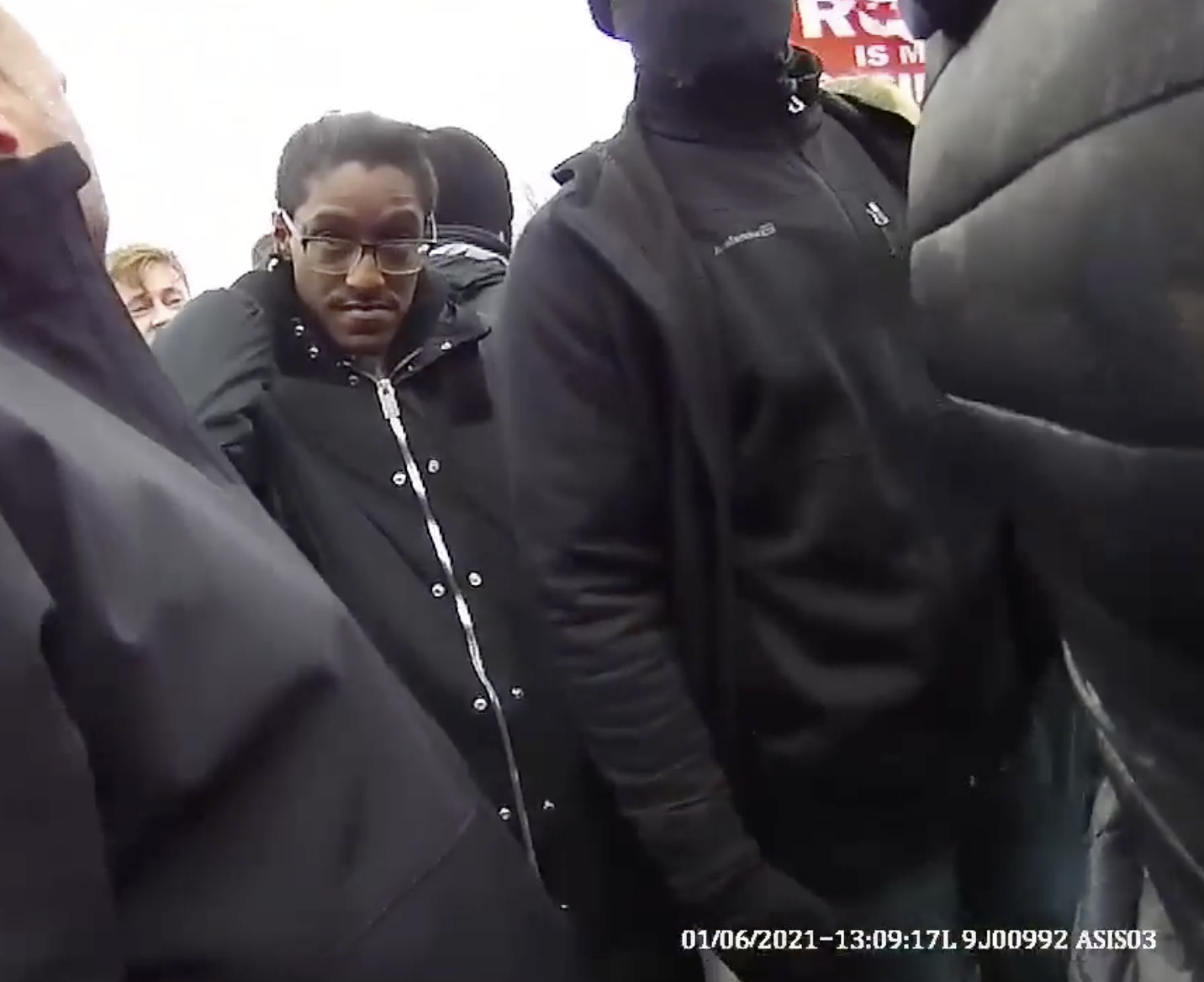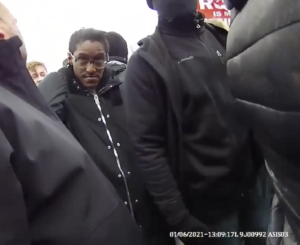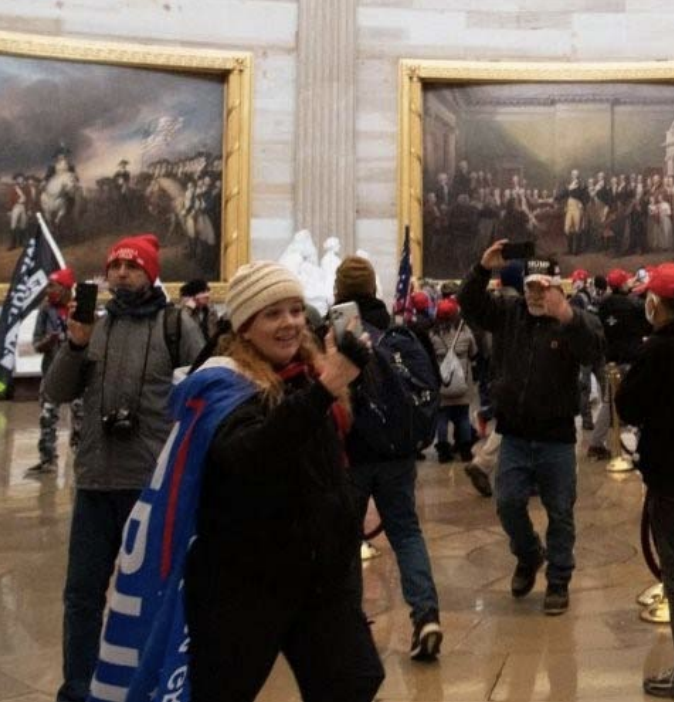Jenny Cudd and Eliel Rosa were charged with trespassing together by complaint on January 12 and arrested on January 13. The arrest affidavit tracked how the two of them walked together through the Capitol.
- At approximately 2:35 p.m., Jenny Louise Cudd and Eliel Rosa, enter the U.S. Capitol via Upper West Terrace Door.
- At approximately 2:36 p.m., Jenny Louise Cudd and Eliel Rosa are observed inside the Rotunda of the U.S. Capitol from the west side doorway that leads into the Rotunda. They are observed remaining inside the Rotunda until approximately 2:39 p.m. They are further observed taking pictures of the Rotunda and the surrounding area.
- At approximately 2:39 p.m., Jenny Louise Cudd and Eliel Rosa are observed walking across the Statuary Hall area of the U.S. Capitol.
- At approximately 2:40 p.m., Jenny Louise Cudd and Eliel Rosa are observed walking the Statuary Hall Connector and moves off camera at approximately 2:42 p.m.
- At approximately 2:43 p.m., Jenny Louise Cudd and Eliel Rosa are observed departing from a large crowd inside the U.S. Capitol in front of the Main Door of the House Chamber and walks east toward the staircase.
- Jenny Louise Cudd and Eliel Rosa are subsequently observed walking past the staircase and is further observed walking past the Upper House Door, going toward the other entrance to the House Chamber
- Jenny Louise Cudd and Eliel Rosa are observed at approximately 2:54 p.m. at the Upper House Door and further observed departing the U.S. Capitol.
It described how Cudd filmed a video at the Willard after she returned, boasting that she was present when, “the new revolution started at the Capitol.”
Jenny Cudd stated on the Facebook video that she was at the Willard Hotel, located on 1401 Pennsylvania Ave. NW, Washington D.C. 20004. During the course of the video she made the following comments to confirm the location and date of the video recording, “I am sitting in front of the Willard Hotel, as I always do when I am in DC protesting,” and “I was here today on January 6th when the new revolution started at the Capitol.”
It further described an interview Cudd did a few days later, boasting of her actions.
On January 8, 2021, Jenny Louise Cudd participated in an interview with a local news station in which she describes her actions on January 6, 2021, in Washington D.C., to include her admission of entering the U.S. Capitol on the same date. Specifically, Jenny Louise Cudd states during her interview she stated the following, “we walked up the steps and walked inside an open door (referring to the U.S. Capitol).” Jenny Louise Cudd further stated, “we the Patriots did storm the U.S. Capitol.” She added in reference to entering the U.S. Capitol, “Yes, I would absolutely do it again.”
As the arrest affidavit notes, the FBI also interviewed Rosa before arresting the two of them. He confirmed that the two of them had, indeed, entered the Capitol on January 6.
On January 8, 2021, Eliel Rosa was interviewed by the FBI in Midland, Texas. During the interview, Eliel Rosa admitted that he and Jenny Louise Cudd had entered the U.S. Capitol on January 6, 2021.
The arrest affidavit focused entirely on events of January 6 and thereafter. And while both Cudd and Rosa were implicated in trespassing, the most damning evidence in the affidavit came from Cudd’s own description of their activity.
On February 3, they were both indicted with their original trespassing charges, as well as obstruction of the vote count and abetting such obstruction.
In March, Cudd moved to sever her case from that of Rosa, arguing in part that by charging them together, the government was attempting, “to create the appearance of a conspiracy or plan.” Specifically, though, Cudd wanted to sever her case from Rosa’s both to prevent his voluntary statement to the FBI from being presented against her, but also to ensure she could cross-examine him to get him to verify that she had no corrupt plan to disrupt the vote count.
Ms. Cudd will seek Mr. Rosa’s exculpatory testimony to show that there was no advance plan for Ms. Cudd to walk into the Capitol, that Ms. Cudd was not aware they were breaking the law by walking around inside, that Ms. Cudd did not act “corruptly,” that Ms. Cudd did not “picket,” that Ms. Cudd was not “disorderly,” that Ms. Cudd did not have the intent to commit any of the offenses alleged, and, more generally and most importantly, to show that Ms. Cudd did not commit any of the offenses of which she is accused. Mr. Rosa’s testimony would support reasonable doubt for each count of the Indictment. Furthermore, Ms. Cudd would be able to examine Mr. Rosa on redirect, to place any government cross examination into context for the fact finder.
In the government response, they largely recited the same facts shown in the arrest affidavit, then noted that Cudd and Rosa traveled from Midland, TX, stayed at the same hotel, and traveled through the Capitol together.
Cudd and Rosa both live in Midland, Texas, and they knew each other prior to January 6, 2021. They checked into the same hotel in Washington, D.C. on January 5, 2021, and checked out on January 7. On January 6, they went to the U.S. Capitol together.
In her reply, Cudd cited from Rosa’s 302, describing that he did not travel to the riot with anyone, and added more details based on the receipts obtained in discovery to make it clear they had not traveled together.
Contrary to the government’s implication that the two traveled together or planned to be at the Capitol together, Mr. Rosa’s interview with the FBI shows they did not. This is further supported by the hotel receipts, which the government obtained and shared with the defense. The Willard Hotel receipts show that rooms for the two co-defendants were booked on different dates and for different prices. (Ms. Cudd paid $143 more for her stay. If they coordinated, she would have surely chosen to save that money and would not have used Expedia for that booking.) The two stayed on different floors and had dinner separately and at different times, according to meal receipts. These were not the only two Trump supporters staying at the Willard Hotel from January 5-7. A large number of other Trump supporters shared those booking dates at the Willard. And, while the two may have known each other from back home and shared political views, that is not a basis for joinder. The entire crowd of Trump supporters, many of whom stayed at the Willard Hotel, were present at the Capitol. They are not charged together.
After the government had provided some discovery, including the contents of two phones, the government response to a request from Cudd that it identify all the exhibits it would use in its case in chief repeated the same facts laid out in the original arrest affidavit, all focused on January 6 and thereafter. The response also said it was far too early for Cudd to demand a list of exhibits that would be used against her at trial.
Shortly after Cudd’s request to learn precisely which exhibits the government would use at trial, Eliel Rosa entered into a plea agreement with an expiration date of July 29, pleading guilty to 40 USC 5104, the lesser of the two trespassing charges used with January 6 defendants. His statement of offense narrated what he and Cudd saw and heard as they wandered through the Capitol together. Specifically, he described hearing gunshots and seeing a bunch of people banging on doors, possibly the doors to the Speaker’s Lobby.
While inside of the U.S. Capitol, Mr. Rosa heard two gunshots and saw 15 to 20 men banging on assorted doors. These men were wearing “MAGA” gear.
In addition to implicating Cudd in his own trespassing, Rosa also noted that he did not have any evidence as to Cudd’s intent when she entered the Capitol.
Mr. Rosa has reviewed the allegations in the indictment that relate to his codefendant, Jenny Cudd, and admits that the allegations are true, or that he does not have sufficient information to dispute or disprove those allegations set forth the indictment. Specifically, this includes that Mr. Rosa does not have information as to Ms. Cudd’s motive and intent when she entered the U.S. Capitol on January 6, 2021 or whether Ms. Cudd had the intent to corruptly obstruct, influence, or impede an official proceeding before Congress – to wit: Congress’s Electoral College Certification on that date.
This might be seen as exculpatory for Cudd, precisely the kind of testimony she hoped to elicit from Rosa at any trial. But it also protected Rosa from any implication in whatever intent Cudd did have when she went to the Capitol.
The government’s sentencing memo for Rosa provided more details about the friendship between Rosa and Cudd, which Rosa described to be a recent friendship.
In an interview with the FBI, Mr. Rosa explained his relationship to his co-defendant Jenny Cudd. Mr. Rosa and Ms. Cudd are new friends, who met at an event in November 2020. Mr. Rosa explained that he and his co-defendant Jenny Cudd held similar beliefs. Although the two were not travel companions, they both discussed their plans to travel to Washington, D.C. and stayed in the same hotel in separate rooms.
It also describes how both returned to the Willard after Trump’s speech, and only then did Rosa decide to go to the Capitol (this detail was used against him at his sentencing).
In the afternoon on January 6, 2021, after listening to President Trump’s speech, Mr. Rosa returned to his hotel, however, he decided he would follow others heading toward the Capitol after learning that Vice President Pence was not going to take action. Mr. Rosa met with his friend Ms. Cudd at the hotel and together they marched toward the United States Capitol where he knew the Congressional certification was taking place.
Rosa’s own sentencing memo explains that the gunshot referred to in his statement of offense was probably the fatal shot of Ashli Babbitt, thereby seemingly confirming that he witnessed a bunch of people in MAGA hats banging on a door before Babbitt was shot.
When he got to the Capitol he walked in through an open door and followed the flow of people going through the rotunda and towards the East gate. He heard what he believes to have been the shot that killed Ms. Babitt. After being asked to stand against the wall for a short period of time while officers dealt with that situation, he (and others) were asked to leave out the East door, and he complied immediately.
Rosa’s sentencing memo also makes clear that he posted nothing positive about the riot after he attended it; a photo he posted to Facebook stating, “And we fight,” was posted at 5:22AM that morning.
On Tuesday, Judge McFadden sentenced Rosa to a year of probation, less than the month of home confinement the government requested (I thought I heard McFadden impose more community service than the government had asked for, 100 hours instead of 60, but no reference to community service appears in the docket).
Hours later, the notice that Cudd would plead guilty posted to the docket. Her plea offer was dated September 27, with a deadline of acceptance of October 11, a day earlier (and indeed, the signatures on the plea agreement are dated October 11). Because Cudd pled guilty to the more serious trespassing misdemeanor than Rosa, it meant that language permitting the government to ask for a terrorism enhancement was included as boilerplate in her plea agreement and given Marina Medvin’s complaints at the plea colloquy, nothing Medvin tried to do managed to get it removed.
Cudd’s statement of offense included a detail that may not appear anywhere else. Not only did she admit under oath she knew the vote was going to be certified (something Rosa also attested to), but she admitted under oath that at the the Stop the Steal rallies on January 5, she heard people calling for revolution and then stated that she was “all for it.”
On January 5, 2021, Ms. Cudd stated the following in a video on social media: “a lot of . . . the speakers this evening were calling for a revolution. Now I don’t know what y’all think about a revolution, but I’m all for it. . . . Nobody actually wants war, nobody wants bloodshed, but the government works for us and unfortunately it appears that they have forgotten that, quite a lot. So, if a revolution is what it takes then so be it. Um, I don’t know if that is going to kick off tomorrow or not, we shall see what the powers that be choose to do with their powers and we shall see what it is that happens in Congress tomorrow at our United States Capitol. So, um either way I think that either our side or the other side is going to start a revolution.”
It’s not clear whether Rosa knew of this video or saw it before he stated that he had no evidence about her intent on the day of the riot.
Cudd’s statement of offense admits that she was in the vicinity of the Babbitt shooting (without specifying it as such), but doesn’t describe (as Rosa’s did) being held up while police dealt with the aftermath.
The government produced to the defense evidence that showed that Ms. Cudd and Mr. Rosa continued walking through the Statuary Hall area of the U.S. Capitol, until 2:43 p.m., when they moved toward the House Chamber and connecting hallways; the defense does not dispute this evidence.
Thus, while Cudd’s statement of offense notes that she did not, herself, enter Pelosi’s office, the statement she recorded after the riot stating that, “we did break down the Nancy Pelosi’s office door,” would have taken place after those with Ashli Babbit had done more than $1,000 of damage to the doors to the Speaker’s lobby, something charged against at least three of those present, and something that could carry a terrorist enhancement for those who did the damage.
We did break down the Nancy Pelosi’s office door and somebody stole her gavel and took a picture sitting in the chair flipping off the camera. . . . they had to evacuate it before we charged the Capitol. . . . Fuck yes, I am proud of my actions, I fucking charged the Capitol today with patriots today. Hell yes I am proud of my actions.” Despite Ms. Cudd’s statement, there is no evidence that Ms. Cudd entered Nancy Pelosi’s office and no evidence that Ms. Cudd stole any property from the Capitol.
The next day, January 8, Cudd explained why she used the collective “we” in her statement from the day of the riot, seemingly trying to distance herself from some of the violence yet still describing that “the patriots [collectively] stormed the Capitol” and asserting she would do the same again, even after she was (at least per Rosa’s statement of offense) present in the vicinity of the Babbitt killing.
So if you watch the entire video [referring to her January 6 social media video] and you watch any of my videos you know that the way that I speak is that I always say we. So I say we the patriots, we . . . whatever. I always say we so those things did happen by other people but I was not a part of that. But in reference to it that umm we the patriots stormed the Capitol and some people went into different offices and different things like that . . . . I would do it again in a heartbeat because I did not break any laws.
The new language in Cudd’s statement of offense — describing the speakers calling for revolution — will help DOJ make a case (one they’ve already started to lay out) about the premeditation reflected in those who gave speeches on January 5.
But it also shows that she responded to calls for revolution the day before the riot by endorsing the idea, and then after the riot, she returned to the Willard and bragged she had been present when the revolution was started, ““I was here today on January 6th when the new revolution started at the Capitol.”

